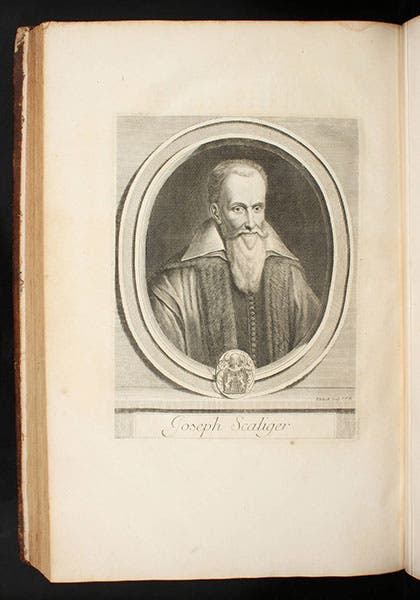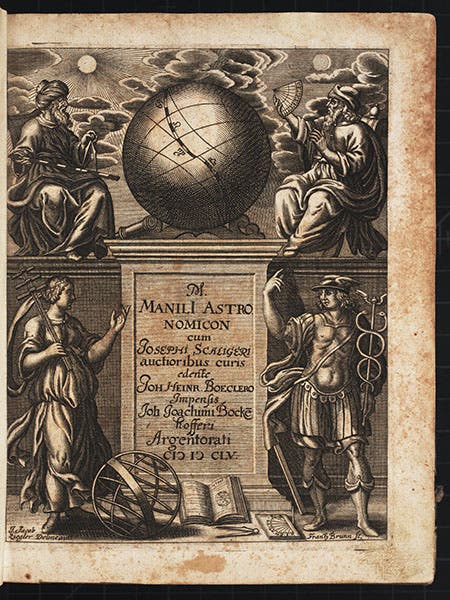Scientist of the Day - Joseph Justus Scaliger
Joseph Justus Scaliger, a French classical scholar of Italian stock, was born Aug. 5, 1540. Scaliger was the founder of modern chronology. Before Scaliger, most attempts to date the events of ancient history relied on the Bible, at least up to the point where the Greeks started writing history themselves. Scaliger read ancient writers such as Manetho, Berossus, and Eusebius, which allowed him to begin assembling a timeline that included Egyptian and Babylonian history. Furthermore, he realized that astronomy could provide valuable assistance to chronology by allowing one to date the many eclipses that are mentioned in ancient records. His first major work was a commentary on the ancient astronomical poet Manilius (1579), which he followed with De emendatione temporum (Amending Chronology, 1583) that set down the principles of his new astronomical chronology.
Scaliger’s other major book, Thesaurus temporum (The Thesaurus of Time, 1606) provided the real surprise: Scaliger revealed that the early Egyptian dynasties and Babylonian kingdoms existed before the accepted Biblical date of the Flood, around 2300 BC, and possibly before the Creation itself, about 4000 BC. Needless to say, this set off an uproar, but before long chronologists agreed that there were other sources for ancient history besides the Bible, and that they must be listened to.
Scaliger spent his last 15 years in Leiden, where he was the world's first research professor, in that he didn't have to teach, or really do anything, except add luster to Leiden. He always wore purple robes, the robes of royalty, to official university functions, since his father, Julius Caesar Scaliger, had assured him that their family was directly descended from the La Scala family of Verona (Scala in Latin is Scaliger). Scaliger was crushed when an enemy (yes, even classical scholars had enemies) later proved conclusively that there was no connection. We have all of Scaliger's important works in our History of Science Collection, including the three mentioned in this piece. The commentary on Manilius of 1579 was reissued in 1655, this time with an engraved titlepage, which we reproduce here (third image).
We have three contemporary or nearly contemporary engraved portraits of Scaliger in our collections; we show you two of them. Interestingly, his father is portrayed as well in these same three portrait books, and we reproduced all three of those when Julius was our Scientist of the Day last year.
Dr. William B. Ashworth, Jr., Consultant for the History of Science, Linda Hall Library and Associate Professor, Department of History, University of Missouri-Kansas City. Comments or corrections are welcome; please direct to ashworthw@umkc.edu.








